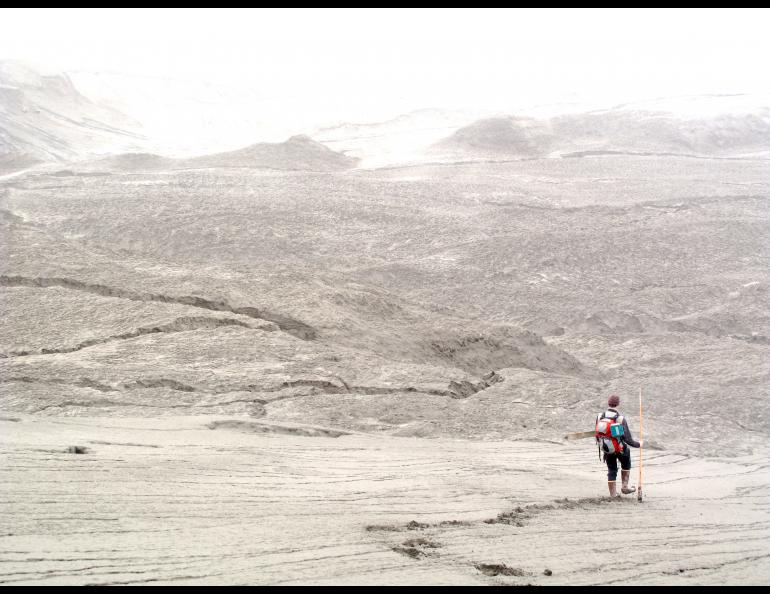
Northern news from a big conference
How big is the American Geophysical Union Fall Meeting held in San Francisco every December? So big it’s like everyone from Barrow attending on Monday. The residents of Soldotna get Tuesday, Valdez Wednesday, Nome Thursday and Kotzebue Friday.
More than 21,000 scientists walk through the Moscone Center during the week, along with others, like me, who are curious about what they are presenting.
Thanks again to the Geophysical Institute of the University of Alaska Fairbanks, I filled a notebook with scribbles regarding the far north in December 2013. Here are a few:
By 2050, polar bears may have their summertime sea-ice habitat reduced to the northern Canadian Archipelago and northern Greenland, according to a study by George Durner of the USGS Alaska Science Center in Anchorage. Durner and his collaborators looked at data from the satellite collars of hundreds of polar bears and what it told him about the bears’ favored habitat. He plugged that information into 10 climate models. The models predicted most polar bear habitat would be lost by mid-century, except Canada’s high arctic and the top of Greenland.
With less sea ice in summer, female polar bears are digging their dens on land more often. Bears dig into snowdrifts to make their birthing dens, often on the lee side of slopes with a 30-degree pitch, said Ben Jones, also of the USGS Alaska Science Center. Jones, who studied polar bear denning sites in northern Alaska using an airborne lidar system, found it interesting that the bears, themselves threatened by warming, often dig their dens near landscape features that are the result of thawed permafrost, among them thermokarst lakes, beaded stream courses and pingos.
The 1946 April Fool’s Day Alaska earthquake caused a tsunami that killed 159 people in Hawaii and destroyed the town of Hilo. That wave continued on to Antarctica, where it still had the punch to wreck a building near the shoreline. The earthquake also generated a 130-foot local wave that killed five men and destroyed a lighthouse at Scotch Cap, on Unimak Island. Scientists have debated the source of the wave, some thinking it was the same plate motion of the earthquake that generated the trans-Pacific tsunami. Others argued it was an underwater landslide caused by the earthquake shaking. In trying to determine which sections of the Pacific plate off the Aleutians are still locked, USGS geophysicists John Miller of Denver and Roland von Huene of Diamond Springs, Calif. saw and identified an undersea mountain of debris that could have caused the Scotch Cap “near-field” tsunami as the pile slid during the earthquake. Miller also said the 1946 Alaska earthquake, now classified as a magnitude 8.6, might have been larger. “The comparison with Tohuku (the 9.2 earthquake off the coast of Japan in 2011) is apt in many ways,” he said.
Kasatochi, the small island in the mid-Aleutians that blew up in 2008, went from the lush green home of seabirds to a steaming pile of ash in a few days. Following the eruption, scientists wondered if the island had sterilized itself of all life. Visits to the island in years following proved otherwise, as scientists found pockets of vegetation and a few insects that survived the eruption deep in rocky bunkers. In August 2013, microbial ecologist Lydia Zeglin found lots of too-small-to-be-seen life forms on the island, many in “legacy soils” that survived the heat of the eruption by being buried by ash. “It didn’t seem to wipe out everything,” Zeglin, who works at the USGS Alaska Science Center, said while describing her poster in San Francisco’s Moscone Center. “If there’s any little bit of organic matter, especially plant life, microbes ramp up from there. We see these little hotspots of things coming back.” The island wasn’t sterilized, “but was as sterile as we’re going to get,” she said. “You’re really starting from nothing. Kasatochi is representative of succession that happened at all those islands.”





